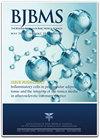单核苷酸多态性标记指导下早期结外自然杀伤/ t细胞淋巴瘤患者最佳治疗方式的选择
IF 3.4
4区 医学
Q2 MEDICINE, RESEARCH & EXPERIMENTAL
引用次数: 0
摘要
本文章由计算机程序翻译,如有差异,请以英文原文为准。
Selection of optimal therapeutic modality for early-stage extranodal natural killer/T-cell lymphoma patients under the guidance of single-nucleotide polymorphism signature.
The therapeutic modalities of early-stage and advanced extranodal natural killer/T-cell lymphoma (NKTCL) patients are completely different. The former is mainly radiotherapy with or without chemotherapy, while the latter relies on chemotherapy-based systemic treatment.1,2 According to Ann Arbor staging system, approximately 70% of the NKTCL patients are classified as early-stage cases who are promising to be cured.3 Considering NKTCL is sensitive to radiation but may be resistant to chemotherapy, the radiotherapy is considered to be the most important treatment for some early-stage patients with a satisfactory local control rate and could be used alone.4 However, systemic recurrence after radiotherapy in a portion of NKTCL patients seriously affects their long-term survival, and the first-line treatment combined with radiotherapy and chemotherapy is considered necessary. Therefore, the use of radiotherapy alone in early-stage NKTCL is still a controversial issue.5,6
Read more in PDF.
求助全文
通过发布文献求助,成功后即可免费获取论文全文。
去求助
来源期刊

Bosnian journal of basic medical sciences
医学-医学:研究与实验
CiteScore
7.40
自引率
5.90%
发文量
98
审稿时长
35 days
期刊介绍:
The Bosnian Journal of Basic Medical Sciences (BJBMS) is an international, English-language, peer reviewed journal, publishing original articles from different disciplines of basic medical sciences. BJBMS welcomes original research and comprehensive reviews as well as short research communications in the field of biochemistry, genetics, immunology, microbiology, pathology, pharmacology, pharmaceutical sciences and physiology.
 求助内容:
求助内容: 应助结果提醒方式:
应助结果提醒方式:


